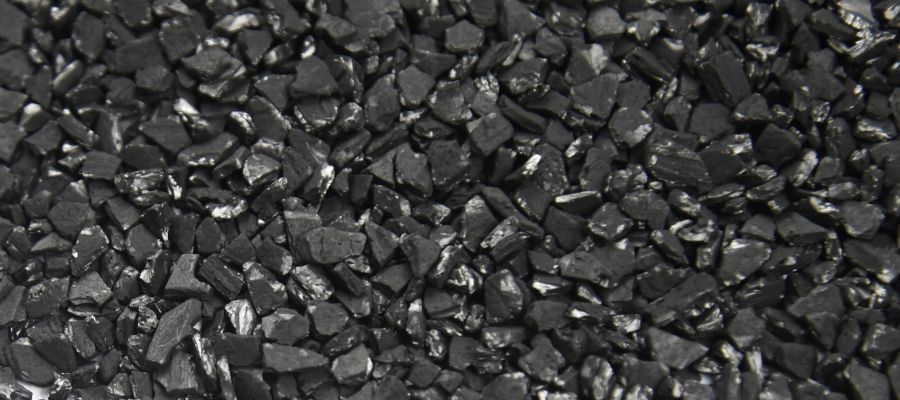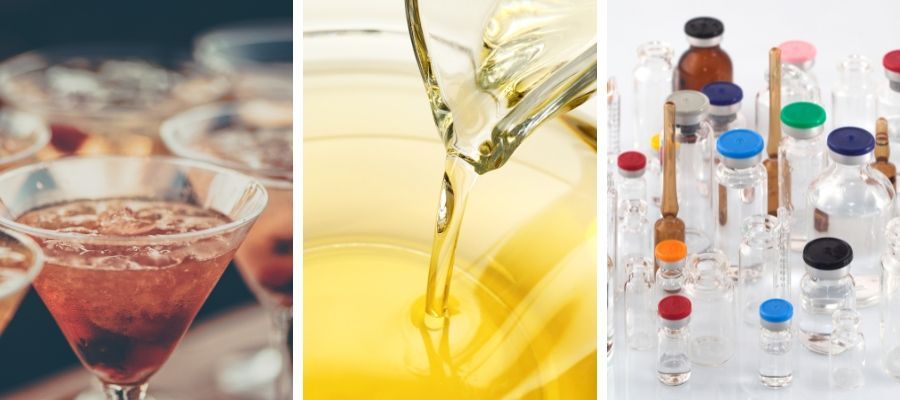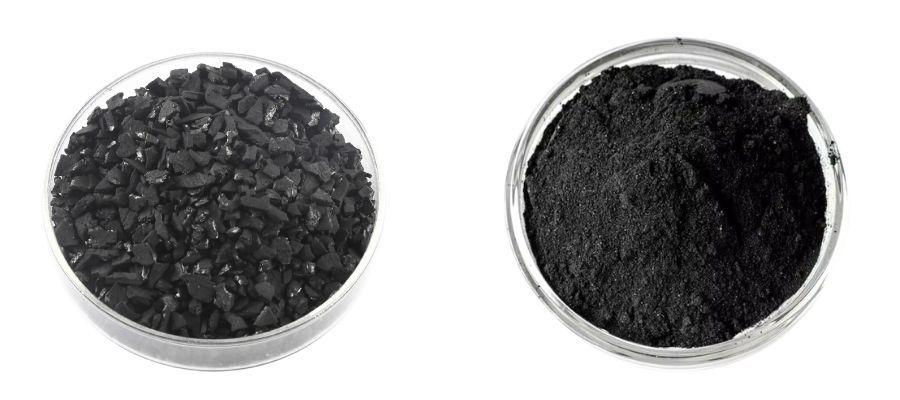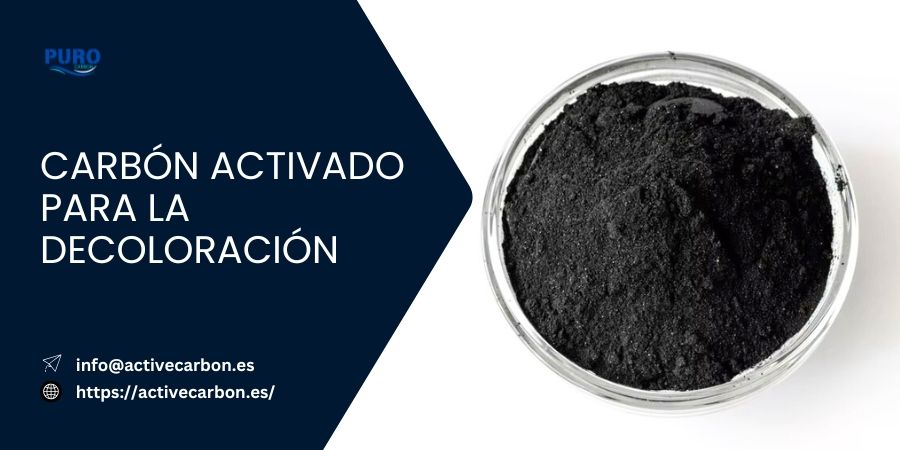In modern industry, activated carbon plays a crucial role in many applications, especially in the decolorization of liquids. This article will explore what is activated carbon for decolorization, its manufacturing process, common applications and the advantages it offers. If you are looking for an efficient solution for decolorization, this article will help you find the right activated carbon.
What is activated carbon?

The activated carbon is a carbon-based material treated at high temperatures to increase its porosity. This gives it exceptional adsorption capacity, allowing it to effectively adsorb impurities and chemicals present in liquids. Due to its high surface area and porous structure, activated carbon is especially efficient in removing unwanted colors, organic impurities and chemicals in liquids.
The types of activated carbon commonly used for decolorization include granular activated carbon and powdered activated carbon. Depending on the specific requirements of the decolorization process, these activated carbons have a high adsorption capacity and can adsorb a variety of impurities and unwanted colors in liquids.
Request a QuoteThe principle of decolorization of activated carbon
The decolorization principle of activated carbon is mainly based on its physical and chemical adsorption effects. Activated carbon has a large number of micropores and mesopores, providing massive surface area and adsorption capacity.
These porous structures can adsorb dye substances and organic impurities in solutions, making liquids clear and transparent. In addition, the functional groups on the surface of the activated carbon can chemically interact with the coloring substances and impurities, enhancing their decolorization effect.
Applications of activated carbon for decolorization

Decolorization is a crucial process in several industries that require liquids with a specific purity. Below are some common applications of activated carbon for decolorization in this field:
- Food and beverage industryIn the production of syrups, edible oils, alcoholic beverages and other products, activated carbon is used to remove unwanted colorants and organic compounds, ensuring product quality and appearance.
- Wastewater treatmentActivated carbon is widely used in the treatment of industrial and municipal wastewater to remove organic compounds and dyes generated by industrial activities such as textile or chemical production.
- Oil refiningDuring the refining process of edible oils and animal fats, activated carbon is used to remove impurities that affect the quality and appearance of the oils.
- Pharmaceutical industryIn the manufacture of pharmaceutical products, activated carbon is used to decolorize, refine, deodorize and remove impurities.
Advantages of activated carbon for bleaching
Activated carbon for decolorization has several advantages that make it very popular in industrial applications:
- High adsorption capacityActivated carbon for decolorization has an advanced porous structure and a large surface area, which gives it a high adsorption capacity to remove colors and other impurities in solutions.
- Fast filtering speedDue to its structural characteristics, activated carbon for decolorization can filter quickly, which is essential in industrial processes that require fast treatment.
- High purity in decolorizationDue to its large surface area and strong adsorption capacity, activated carbon for decolorization can achieve high purity decolorization effect.
How to choose the right activated carbon for decolorization
Choosing the right activated carbon is key to the decolorization process, as different types of activated carbon are suitable for different applications. Here are some tips for choosing the right one:
Determine the characteristics of the liquid to be decolorized.
First, it is necessary to know the characteristics of the liquid to be decolorized, such as its composition, color intensity, viscosity, pH, among others. These factors will directly influence the selection of the activated carbon. For example, some liquids may contain large organic contaminants, while others may have very fine dye molecules. Knowing these characteristics will help you select the most suitable activated carbon.
- High viscosity liquidsFor liquids with a high viscosity (e.g., certain fats or thick juices), it is recommended to use granular activated carbon The larger size ensures that the liquid passes through and comes into contact with the activated carbon in a gentle and effective manner.
- Liquids with high dye concentration: For particularly strong colored liquids, the powdered activated carbon is usually a better choice, as it has a higher specific surface area and adsorbs larger amounts of pigment molecules faster.
Choosing the right form of activated carbon

Different forms of activated carbon are suited to different decolorization applications. Common forms and their applications are described below:
- Granular activated carbonGranular activated carbon is ideal for treating large volumes of liquid. Due to its particle size, the liquid passes efficiently through the granules, which can effectively adsorb impurities. It is suitable for continuous decolorization processes, especially for liquids in large quantities such as juices, beverages and water treatment.
- Powdered activated carbonPowdered activated carbon has a larger surface area and is suitable for rapid treatment of small volumes of liquid or liquids requiring high precision decolorization. It can quickly interact with impurities in the liquid, making it ideal for fast treatments. For liquids with a high concentration of colorant, powdered activated carbon can achieve a faster decolorization effect.
Considerations for special applications
If the liquid to be decolorized is used in the food or beverage industry (such as juices, syrups, alcoholic beverages, etc.), it is usually required that the activated carbon be non-toxic, tasteless and comply with food safety regulations. In these cases, it is recommended to choose food-grade activated carbon, especially activated carbon based on wood o coconut shelldue to its low ash content and excellent adsorption capacity.
Supplier selection and quality assurance
In addition to choosing the right type and form of activated carbon, selecting a reliable supplier is key to ensuring decolorization effectiveness and long-term profitability. Choosing an experienced activated carbon supplier ensures that the products supplied meet industry standards and provides technical support and recommendations for your decolorization process.
Purocarbonas a leading supplier of activated carbon, has extensive experience in the industry. We offer a variety of high quality activated carbons for decolorization. Our professional team is dedicated to helping customers select the most suitable activated carbon solution for their specific needs, ensuring they get the best results in their decolorization process.
Request a QuoteSummary
The use of activated carbon for decolorization is an efficient and sustainable solution in various industries requiring high quality liquids. Thanks to its exceptional adsorption capacity and versatility, activated carbon has become an essential component in liquid treatment.
We offer a wide range of high quality activated carbon and customized solutions for various industrial applications. If you are looking for an effective decolorization solution, please contact us. contact with us.
